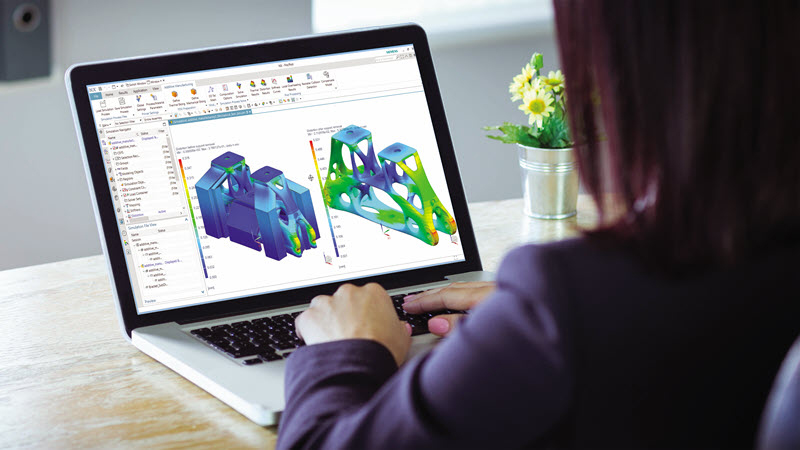
Although it is clear that R&D engineering can be a rewarding career, there are many misconceptions and pitfalls to avoid before you decide to make it a career. Consider the requirements for entry into R&D and what your job duties will be. It is important to know the requirements for research and development engineers jobs. Here are the top benefits of a career in R&D engineering.
Research and development engineers are in good employment prospects
Career opportunities for research and development engineers are booming. Although there are many options for scientists/engineers, many prefer to work in academic environments. The R&D sector includes core technology, telecommunications, life sciences, oil and gas, and energy, among many other areas. There is a strong job market for engineers due to the high demand. They can expect to be well-paid and have good job security.
Today's businesses place a high value on innovation and technological advancement. Research and Development engineers need to keep up with the latest industry trends and invent new products to meet customers' needs. They might also be responsible to ensure that products conform to industry standards. Fortunately, there is a broad range of opportunities for engineers who are passionate about product development. While there are numerous types of research and development positions, all of them provide excellent job satisfaction.
According to U.S. Bureau of Labor Statistics (USBS), engineers have a bright future. According to the U.S. Bureau of Labor Statistics, the level of engineering job growth is expected at its highest in the next 10 years. Engineers will need to improve product design and productivity in order to sustain sustainable practices. Biomedical engineers are in high demand for their ability to improve product design and increase productivity. BLS expects that these engineers will see a 6% rise in job opportunities by 2030. If you are looking for a challenging but rewarding career in research-and-development, this is the field for you.
Education requirements for research- and development engineers
Most employers require a bachelor’s degree. However, some employers may prefer to hire individuals with a graduate degree. Education requirements for research and development engineers include relevant coursework in math, physics, chemistry, biology, computer science, and engineering. R&D engineers often receive on-the job training and internships. They also learn how to use laboratory equipment. Graduates can seek professional certifications to increase their job opportunities.

Basic education requirements for research and development engineers are the same as for other engineers. A graduate degree in engineering is required by most employers. Candidates with a PhD, however, will be preferred over candidates without. Candidates should have basic computer skills as well as a solid background and work experience that is relevant to the job. R&D engineers require a graduate degree. They also need strong leadership skills and relevant work experience.
Many employers offer comprehensive benefits to R&D engineers, including health insurance, dental and vision insurance, paid sick and vacation days, and more. They might be eligible for bonuses if they launch a successful product or meet sales benchmarks. Additionally, they may be eligible for continuing education reimbursements and participate in wellness programs. What is the education requirement for an R&D engineering engineer? Here are the requirements for R&D engineer employment.
Job duties of a research and development engineer
It is the job of research and design engineers to develop detailed plans for product development. They evaluate existing products to identify any potential improvements. Engineers often work together with other engineers to develop product designs and sales plans. Although the annual average salary for an R&D engineering engineer is $95,540 per annum, it can vary depending upon the employer, experience and location. Below are some typical responsibilities and duties for researchers engineers.

Research and development engineers are experts in their fields. To analyze processes, they apply engineering principles and theories. Then they summarize their findings and send them to external and internal bodies. They also oversee the completion of projects and ensure that they stay on time and within budget. They create technical documentation for all their projects. Research and development engineers often report to senior management and assist with the moderately complex aspects. Typically, these engineers will have four to seven years of related experience.
A R&D engineer oversees the work of other engineers assigned to a project. They manage all project team members and create detailed project plans. They also do market research to identify the current market needs. They create specifications and conduct research on existing products. They also work in collaboration with marketing teams to develop sales strategies for future products. A research-and-development engineer works closely with other departments, such as marketing engineers and other managers.
FAQ
Which engineer makes the highest salary?
Software engineers are the answer, as they write code for computers. Software engineers also have the freedom to choose what type of project they would like to work on. Software engineers can be employed in any industry but prefer to work in tech companies such Google or Microsoft.
What do electrical engineers do?
They create power systems that can be used by humans.
They are responsible in designing, building, testing and installing all types and sizes of electric equipment for residential, commercial, and government customers.
They plan and direct the installation of these systems.
Electrical engineers design and install electronic devices, circuits, and components that convert electricity into useful forms.
Are there special qualifications required to study engineering in Canada?
No. No. All that's required is a good grade in your GCSEs. Some universities require that applicants achieve certain academic achievements before they can be accepted. Cambridge University, for instance, requires applicants to earn A*-C grades (in Maths, English Language or Science)
If you do not meet these requirements, you'll need to take additional courses in order to be prepared for university entrance tests.
You may need to take additional math/science subjects as well as a language class. You can learn more about these options by contacting your school guidance counselors.
What is an industrial engineer doing?
Industrial engineers are concerned with how things function, operate and interact.
Their job ensures that machinery, plants, and factories run efficiently and safely.
They design and implement equipment, controls, or operations that make it easier for workers, to accomplish their tasks.
They also make sure that machines are compliant with environmental regulations and meet safety standards.
Statistics
- Typically required education: Bachelor's degree in aeronautical engineering Job growth outlook through 2030: 8% Aerospace engineers specialize in designing spacecraft, aircraft, satellites, and missiles. (snhu.edu)
- Job growth outlook through 2030: 9% (snhu.edu)
External Links
How To
How to read engineering drawings
Engineering drawings are a visual representation of an object. There are many elements in these drawings such as text, dimensions and symbols. Since ancient times engineering drawings have been in existence. In Egypt 3000 BC, the first drawing was created. They are used to design objects such as bridges and buildings.
Engineers use engineering drawing to explain how something looks. It aids others in understanding what you're talking. Engineers draw things out using symbols and numbers to show measurements. This makes engineering easier for those who don't have any knowledge.
There are two main types: 2D or 3D.
2D drawings can be flat representations or three-dimensional objects. These can include sections, elevation views, plans, and axonometric projects.
3D drawings represent real-life objects with multiple angles. These drawings are often created using computer software. SketchUp, for example, allows you to view a bridge from the sky. Next, choose "View" and "Top View." Then rotate your view until all of it is displayed from above.
2D drawings are best viewed as a whole. It is important to not only focus on one piece of the 2D drawing. It is important to pay attention to everything in the top-right corner.